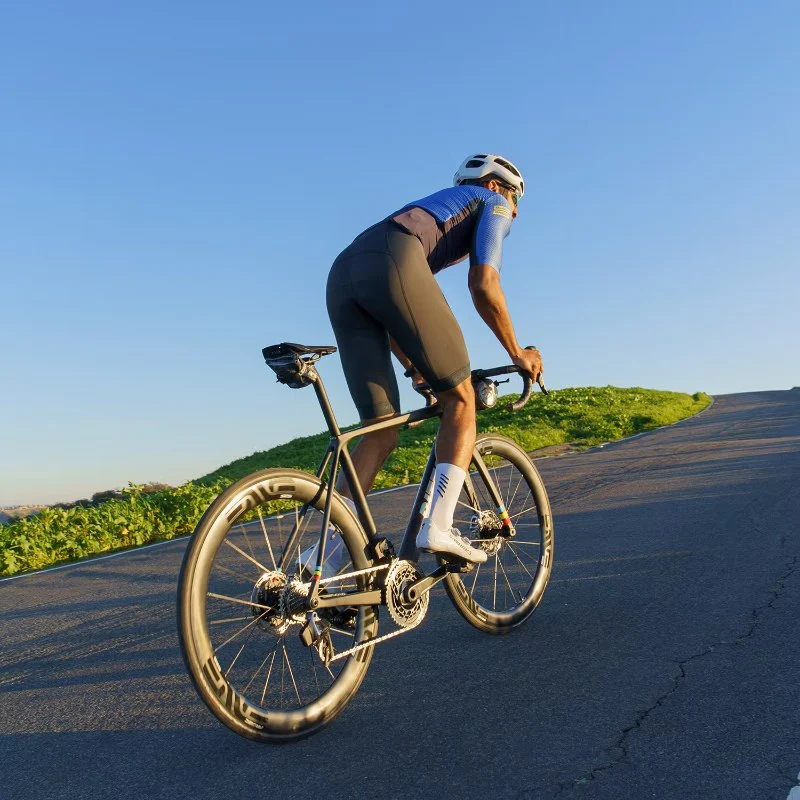
- 1. Understanding Gear Ratios in Cycling
- 2. Best Gear Ratios for Climbing
- 3. Best Gear Ratios for Sprinting
- 4. How to Find the Right Gear Ratio for Your Needs
1. Understanding Gear Ratios in Cycling
A gear ratio in cycling refers to the relationship between the number of teeth on the chainring (the front gear) and the number of teeth on the cassette (the rear gear). It directly influences how easy or difficult it is to pedal your bike, affecting both your speed and effort.
Gear ratios are crucial for determining your cycling efficiency in different scenarios. Whether you're climbing a steep hill or sprinting on a flat road, the gear ratio you choose will significantly impact your performance. A higher gear ratio means more speed but requires more effort, while a lower ratio makes pedaling easier but sacrifices speed.
2. Best Gear Ratios for Climbing
When it comes to climbing hills, you'll want a gear ratio that allows you to maintain a high cadence without burning out. A low gear ratio is best for this purpose. Low gears, such as a combination of a small chainring (e.g., 34T) with a large rear cog (e.g., 32T), make it easier to pedal uphill by reducing the resistance.
Ideally, a lower gear ratio allows you to maintain a comfortable cadence (the speed at which you pedal) without putting too much strain on your muscles. This is important for long climbs, as maintaining a steady rhythm can prevent fatigue and improve endurance.
Case Study: A cyclist training for mountain climbs may use a 34T/32T gear ratio on a 29er mountain bike. This setup provides the perfect balance between maintaining cadence and preventing excessive muscle strain, which is critical for climbing at high altitudes.
3. Best Gear Ratios for Sprinting
Sprinting demands a gear ratio that lets you push your bike to maximum speed in a short period of time. A higher gear ratio, which combines a larger chainring with a smaller rear cog, will allow you to accelerate quickly and reach higher speeds on flat terrain or during short bursts of speed.
For sprinting, gear ratios like 52T/11T or 50T/11T are common. These setups are designed for speed and are best suited for cyclists who can maintain a high cadence at higher gears without losing power or form.
Example: A competitive road cyclist in a flat race might opt for a 53T/11T combination to maximize their acceleration and reach top speed quickly, especially during sprints or time trials.
4. How to Find the Right Gear Ratio for Your Needs
Selecting the right gear ratio depends on several factors: your physical abilities, cycling terrain, and riding style. It’s essential to balance the gear ratio to match the demands of the ride. Here’s a step-by-step guide to finding your optimal gear ratio:
Step 1: Identify Your Cycling Goals
Determine whether you need to focus on climbing, sprinting, or maintaining a steady pace on flat roads. Your goals will guide you toward either a higher gear ratio (for speed) or a lower gear ratio (for climbing).
Step 2: Analyze Your Riding Terrain
If you’re tackling steep hills, you’ll need a lower gear ratio. If you’re riding on mostly flat terrain or sprinting, you’ll benefit from a higher gear ratio.
Step 3: Test Different Gear Combinations
Don’t be afraid to experiment. Many cyclists find their ideal gear setup after testing different combinations of chainrings and cogs to see what works best for their body and riding style.
Step 4: Consult with Experts
If you’re unsure, consider visiting a local bike shop or consulting with experienced cyclists who can provide advice based on your cycling experience and goals. They can help you optimize your gear ratio for the most efficient riding experience.







 Snapcycle (ATB)1.0 (1 reviews)
Snapcycle (ATB)1.0 (1 reviews) VIP Custom Cycles0.0 (0 reviews)
VIP Custom Cycles0.0 (0 reviews) Doghouse Multisport Training Center5.0 (2 reviews)
Doghouse Multisport Training Center5.0 (2 reviews) 5 Star Discount & Phone/Pc Fix5.0 (1 reviews)
5 Star Discount & Phone/Pc Fix5.0 (1 reviews) Hermosa Cyclery4.0 (213 reviews)
Hermosa Cyclery4.0 (213 reviews) Blue Run Bicycles & Paddle Co.4.0 (88 reviews)
Blue Run Bicycles & Paddle Co.4.0 (88 reviews) How to Teach Kids to Ride a Bike: A Step-by-Step Guide for Parents
How to Teach Kids to Ride a Bike: A Step-by-Step Guide for Parents Tips for Riding on Busy City Streets: Smart Strategies for Urban Cyclists
Tips for Riding on Busy City Streets: Smart Strategies for Urban Cyclists Best US National Parks for Mountain Biking: Ride Epic Trails Across America
Best US National Parks for Mountain Biking: Ride Epic Trails Across America Best Aero Helmets for Time Trials and Racing
Best Aero Helmets for Time Trials and Racing How to Clean and Lubricate Your Bike Chain Like a Pro
How to Clean and Lubricate Your Bike Chain Like a Pro 10 Must-Have Items for Long-Distance Cycling Trips
10 Must-Have Items for Long-Distance Cycling Trips